April 21, 2016
Using a "Flight Simulator" Concept to Support Succession Planning and Operator Training in Water & Wastewater Utilities
There are two big changes taking place in the environmental utility sector. Firstly, tighter regulations are leading to increasing complexity in utility operations and secondly, the baby boomer generation that started out in the industry in the 1970s and 1980s is retiring.
The changing regulatory landscape and increasing complexity in operations
Regulations are changing – quickly and furiously. The activated sludge process was invented about 100 years ago. For the first 80 years (through the end of the 90s), the major focus of wastewater treatment was simply the removal of solids and organic carbon. A well designed wastewater treatment process simply needed to have sufficient aeration to support carbon removal.
Then came the wave of Nutrient removal requirements starting in the late 1990s, as communities in the Mid-Atlantic and North East bordering water bodies like the Chesapeake Bay, Puget Sound, Long Island Sound and a host of other sensitive water bodies started to address the problems that excessive nutrients (Nitrogen and Phosphorus) were having on their precious water resources.
The resulting effect has been an explosion of new technologies and processes. Membrane bioreactors, denitrification filters, biofilm media reactors, thermal hydrolysis, advanced oxidation, granular sludge systems – have now moved from laboratories squarely into the heart of the wastewater treatment process.
On the drinking water treatment side, utilities now have to deal with challenges like eliminating the risk of toxins like microcystin from algae, chlorination byproducts, etc.
The graphic below captures the changes taking place in the wastewater industry – observe the blank spaces in the first 70 years, and then the explosion of regulations and new technologies in the last 3 decades!
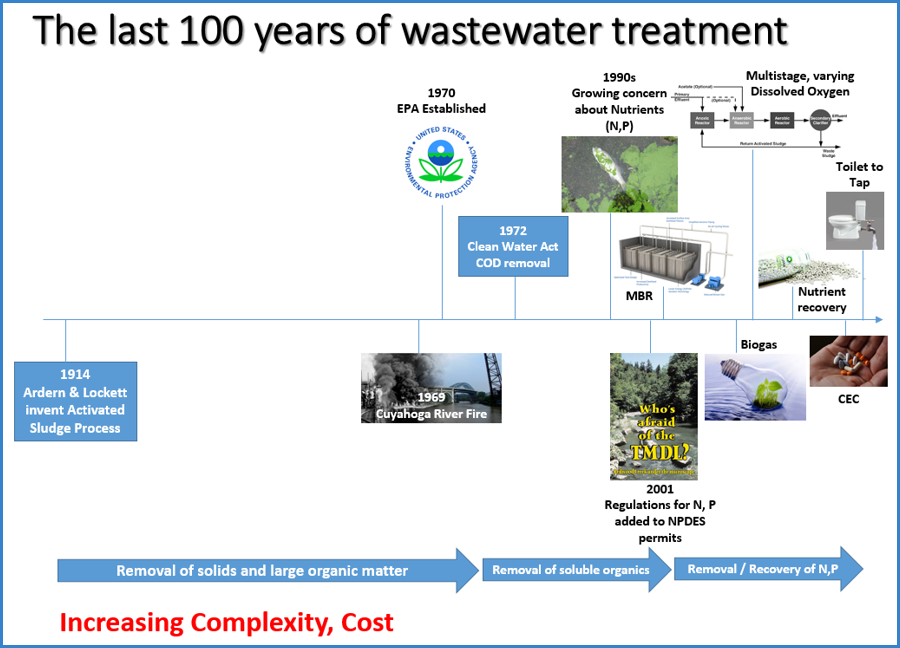
Bye-Bye Baby Boomers, Welcome Younger Operators
In the United States, the water treatment industry took off in a big way with the enactment of the clean water act in 1972. Now, all communities were required to do water and wastewater treatment. Tens of thousands of water and wastewater plants were built, and existing facilities were upgraded to meet the new requirements. A crop of 20, 30 and 40 year olds signed up to become operators. Now, those pioneering operators are silver haired, and starting to retire (see graphic below). This age group makes up well over 60% of the operator population in many facilities.
The environmental utility sector has an informal apprenticeship based training model. New operators learn from older operators. This group is now retiring – with their process knowledge and experience locked up in their minds. As an industry, we do not have good knowledge management practices. Each facility pretty much has to figure things out for themselves.
While industry wide certification and licensing programs help ensure that operators have some necessary skill sets and process knowledge, each treatment plant is unique, and learning must be customized for a particular facility.
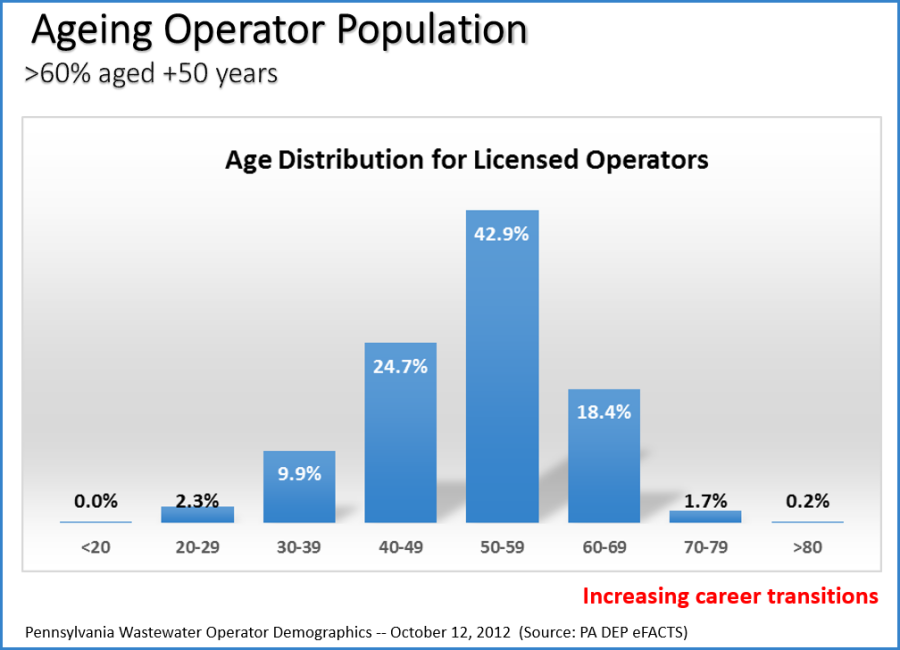
Enter "Flight Simulator" Platforms for Operator Training
In the airline industry, pilots must first learn to fly in simulators before they are put in an actual air craft. Even experienced pilots must still routinely meet some training hour requirements in simulators. In the nuclear industry, simulator based instruction is a key part of an operator's required training.
The common thread between the airline and nuclear industries is the fact that both industries cannot afford any margin of error. A pilot cannot learn to land on the job – that will need to be honed in a simulator. A nuclear plant operator cannot afford to wait until a critical incident happens before understanding what steps will need to be taken to maintain safe operations.
There is also no margin for error in the water and wastewater industry. Our facilities are regulated, and every deviation from permitted values in the air emissions, liquid discharge or solids make up might be reportable incidents. Worse, the violations could even lead to public health & safety hazards.
For the last decade, Hydromantis has led the way in developing 3D simulators in the utilities industry. The process starts when a calibrated computer model of the facility is developed using Hydromantis' GPS-XTM process modeling platform. Next, a bird's eye view or SCADA interface shots of the facility are taken. These are then used to develop a 3D or SCADA interface that has the exact look and feel of the facility's treatment process or SCADA screens. We call this operational tool, SimuWorksTM.
All the operational changes that are made in the facility can be done using the SimuWorksTM platform – with the exact same outcomes. The following case studies highlight the different applications of SimuWorksTM.
Case 1: Supporting Facilities Undergoing Upgrades and Transitions
The Metropolitan Sewer District of Greater Cincinnati (MSDGC) in Ohio State and Pima County Regional Wastewater Reclamation Department in Arizona State operate multiple facilities that address the sewage treatment needs of millions of customers.

Bird's eye view of a wastewater plant in Cincinnati and the representation of the plant in SimuWorksTM
Over the last decade, Hydromantis has supported both utility agencies in developing plant wide process models and 3D interfaces in SimuWorksTM.

Plant overview and SimuWorksTM interface for the Tres Rios Wastewater facility in Pima County, Arizona
In both districts, the simulators have been successfully used to support the following applications.
- Manage the process design & upgrade process
- Process control strategy evaluation
- "What-if" scenario operations planning
- Operational planning for shutdowns/scheduled maintenance
- Operational planning for wet weather operations
- Process optimization – energy savings, chemical cost savings, aeration optimization, etc.
- Operational training and "flight simulator" based learning
Case 2: OCWA – Operator Training and Certification Using SimuWorks
Ontario Clean Water Agency (OCWA) is the largest operator of water and wastewater facilities in the province of Ontario. The agency is a trainer for the Ministry of the Environment's mandatory certification renewal courses. OCWA partnered with Hydromantis Environmental Software Solutions to develop a SimuWorksTM based interface that could be used as a basis for the certification program as well as operator training at their facilities.
The SimuWorksTM platform replicates SCADA and human machine interface (HMI) systems at specific OCWA facilities. The interface allows users to review and test a variety of operational variables.
The tool has been used by operators and managers to identify and validate plant optimization and cost-saving strategies, trouble shoot process issues, analyze projects and operational risks, and forecast plant capacity and maintenance needs.
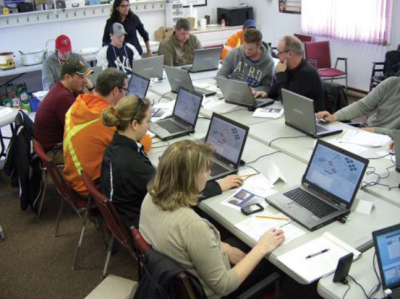
Operators at the Belleville (Ontario) Water Control Plant work on a troubleshooting scenario
during a Sewage Simulator Solutions Course using the SimuWorksTM platform
Case 3: WEF Operations Challenge
Competitors in the annual WEF Operations Challenge now participate in a simulator enabled process control event based on Hydromantis' SimuWorksTM platform. According to Mike Ross, Chair of the WEF Ops Challenge Process Control Event, "the incorporation of a simulator based platform into the WEF Operations Challenge is a reflection of the recognition that simulation is a process skill."
In the event, competitors are presented with operational challenges that they are required to solve. The issues they are required to deal with range from aeration limitations, to nutrient removal, biological and chemical phosphorus removal, equipment shut off, off line aeration tanks and clarifiers, etc.
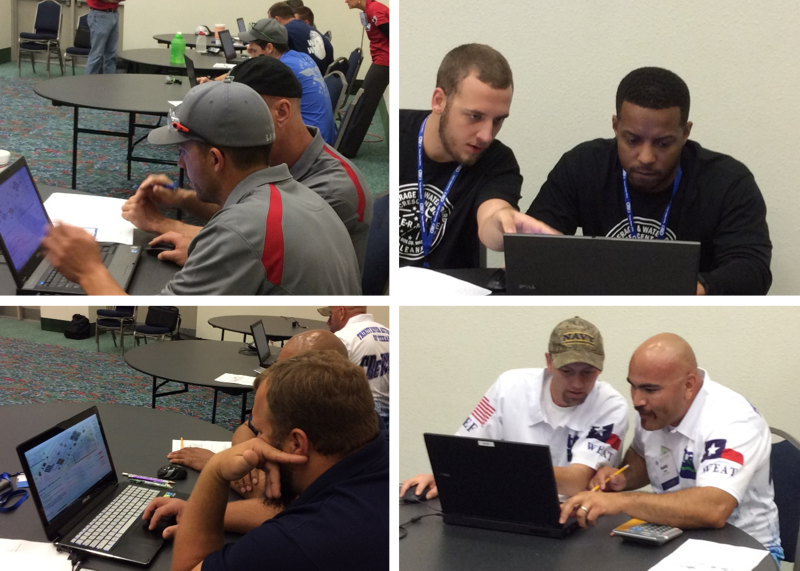
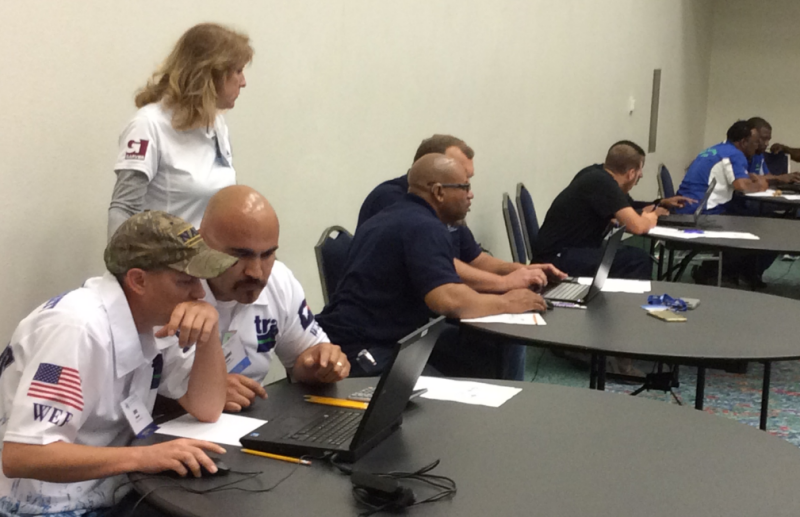
Competitors working on the simulator based Process Control Event at the Water Environment Association of Texas (WEAT)
Regional Operators Callenge Event in Fort Worth, Texas in April 2016
Conclusion
Simulation-based training tools provide a sophisticated, yet readily accessible method for supporting succession planning, enhancing process knowledge, optimizing operations and implementing process strategy in an experiential, risk-free manner. SimuWorksTM can be deployed as a full-scale replica of an actual wastewater facility plant layout or the facility's SCADA system. The platform offers a user-friendly, customized interface that replicates not only the physical look and feel of the operator control interfaces at the facility, but also incorporates all of the operational variables that can be changed or monitored at the facility.
In summary, the benefits of simulators for training include:
- Providing a safe learning environment: Simulators allow emergency and abnormal situations to be realistically addressed without risk to the operators, staff or populations. The operator can be exposed to extreme situations such as wet weather flows, high organic loading spills, equipment failure, and other such emergencies without the risk of system or process failure
- Enhancing the learning experience: By removing the risk of system and process failure, the student and instructor can focus on the learning experience
- Enabling a broad range of scenarios and situations to be tested: Simulators offer the flexibility to test out conditions that have either been observed historically, or even novel conditions that are yet to be observed, but which might plausibly occur
By providing these benefits, simulators enable less experienced operators to fill vacancies in existing operators' pools more readily, and they can be used for getting new or seasoned operators familiar with new processes. Furthermore, simulators enable operations to be reviewed, repeated and varied until they become ingrained in the operator and internalized.
Want to Know More?
To find out more about how Hydromantis can support your process simulation and operator training needs, please email info@hydromantis.com
